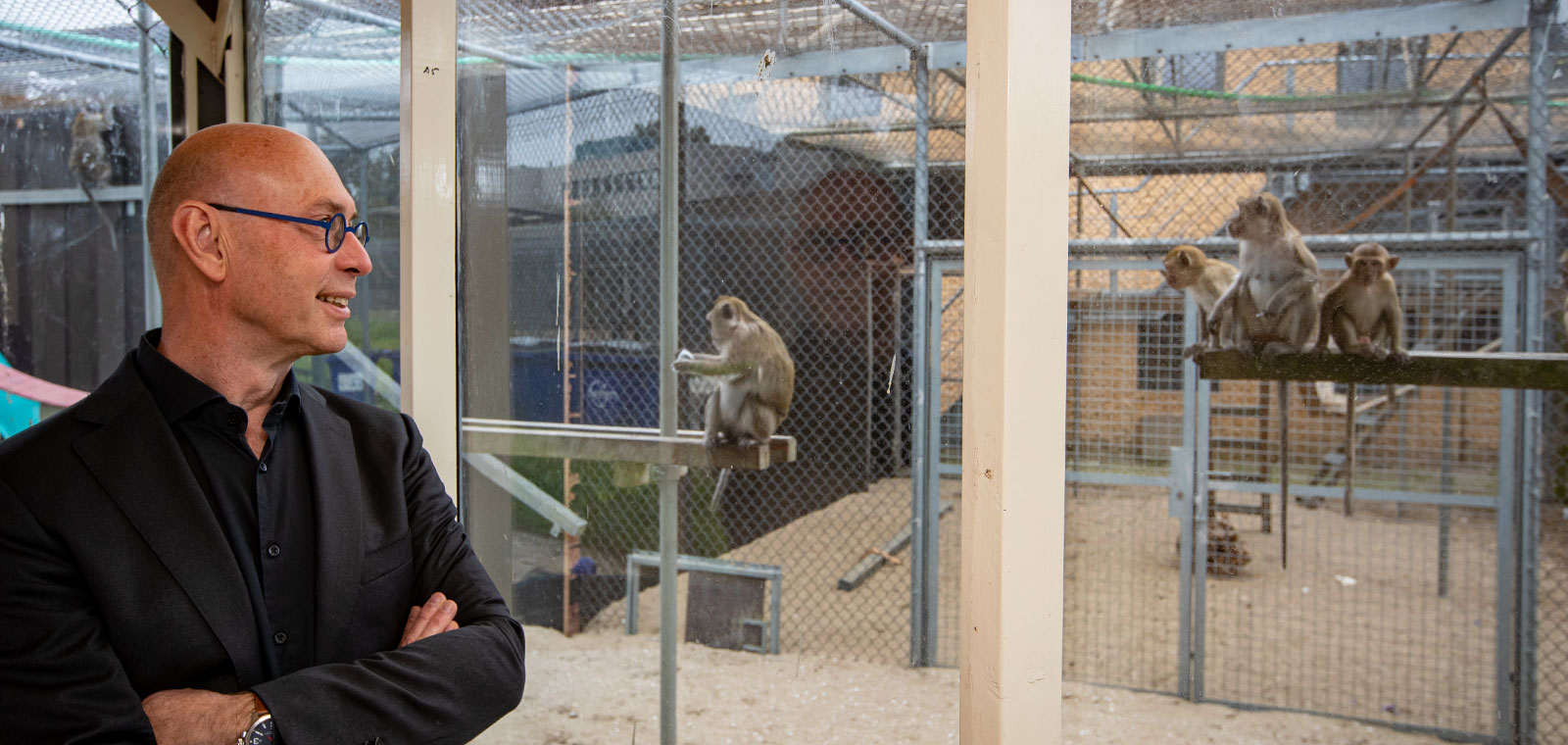
Less animal testing, more animal welfare. That is the title of an article in "Vet Magazine", a Dutch magazine for veterinarians. In this article Jan Langermans, head of Animal Science at BPRC, sheds light on how BPRC deals with animal experiments and animal welfare.
Jan is not only head of Animal Science, but has also occupies the chair 'Welfare of Laboratory Animals' since 2018 as professor by special appointment at Utrecht University. He sees animal welfare as a very important part of BPRC: “As long as we cannot completely replace animal testing as a method, we must strive for the highest possible welfare for our monkeys. Not only for the animals themselves, but also for the quality of the research”.
Every animal counts
The BPRC research focuses solely on very serious, life-threatening human diseases such as malaria, TB, HIV, influenza and Parkinson's. Work is also currently underway on possible vaccines against corona. Often the monkeys (macaques and common marmosets) are the very last step before a drug or vaccine is tested on humans. Earlier, rats or mice were usually used that are further away from humans. Although this is ethically less sensitive, Jan emphasizes that as far as he is concerned, every animal, regardless of species, counts. In any animal experiment, its usefulness and necessity must always be taken into consideration and it has to be performed optimally. All this is also laid down in the Animal Experiments Act. A permit is required for each type of experiment and an animal experiments committee assesses whether the importance of the research outweighs the discomfort of the animals.
The 3Rs as a guide
Important in the policy of BPRC are the "3Rs": replacement, reduction and refinement. By replacement and reduction, we mean the aim to replace animal testing as much as possible, and if that cannot be reduced, by animal-free research methods. In refining, we focus on reducing the discomfort of the animals as much as possible and to ensure the best possible living conditions for the animals. At the same time, this can also lead to a reduction in the number of animals. For example, by applying imaging instead of surgery, we can track animals for a longer time and thus obtain more information from an experiment. Something that also leads to a reduction. In addition, as little stress as possible for the animals is not only pleasant for the animals, but also better for the research. Stressed animals have a reduced immune system.
Want to know more about BPRC? Surf around on our website.
The entire article (Dutch) can be viewed here.
Photo: L. den Boer - ldbproduction.nl

